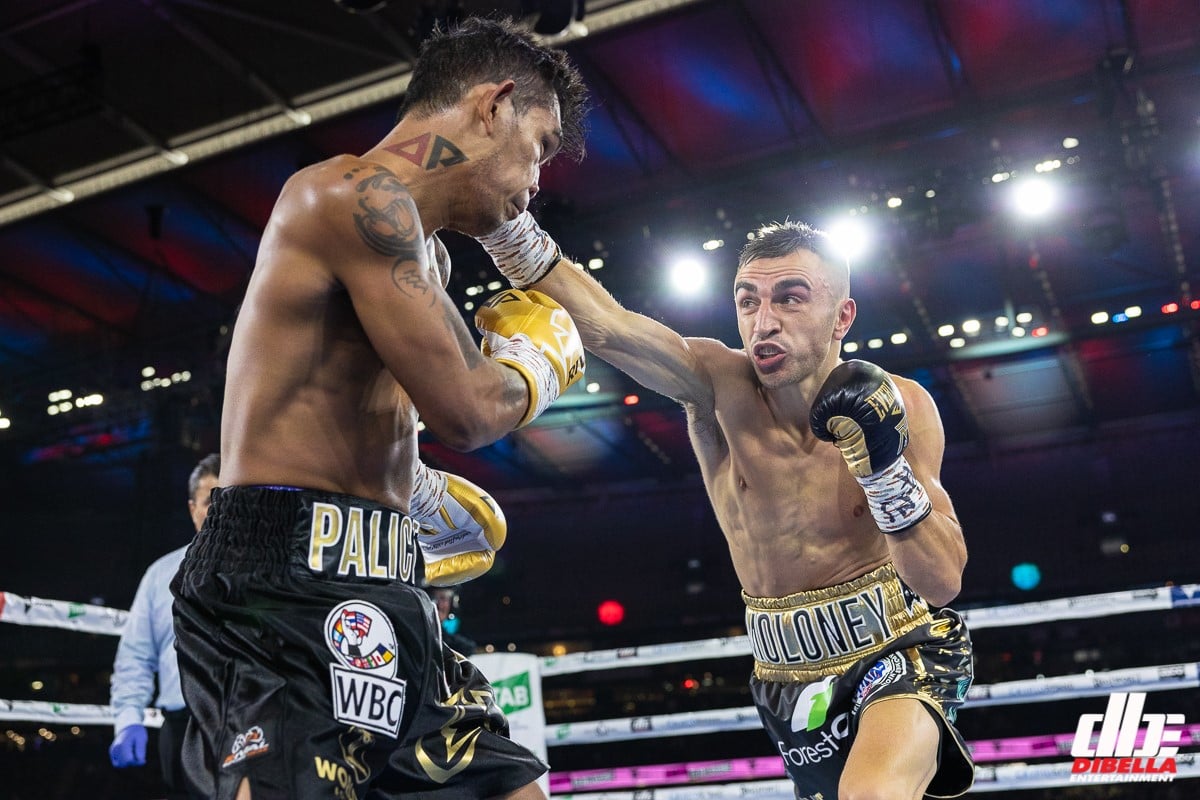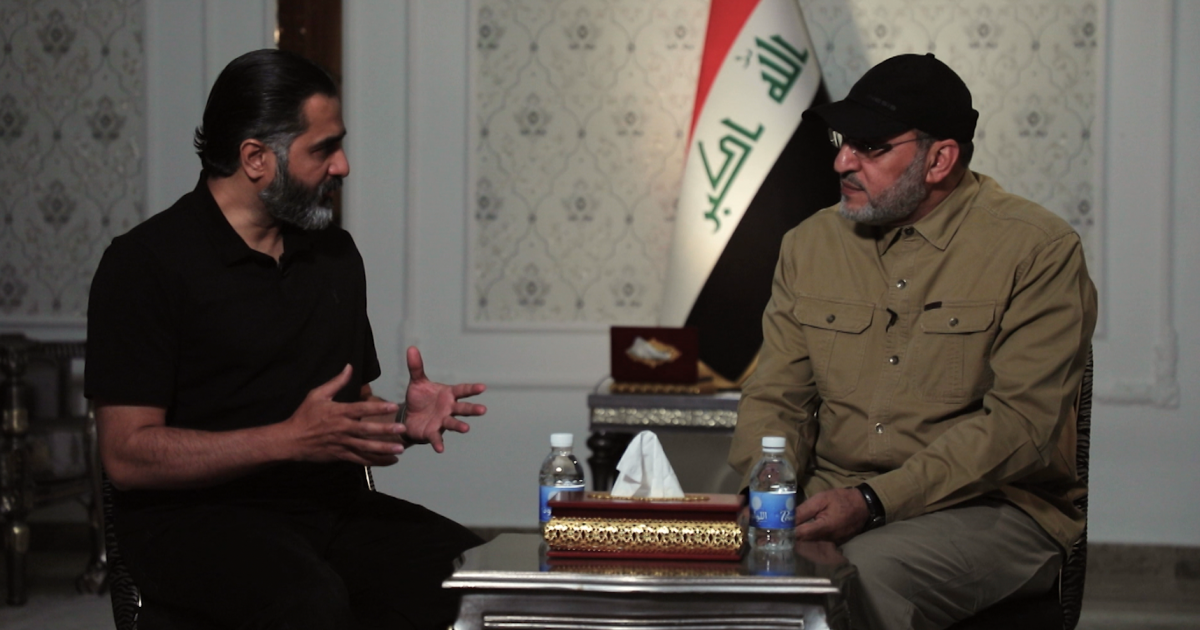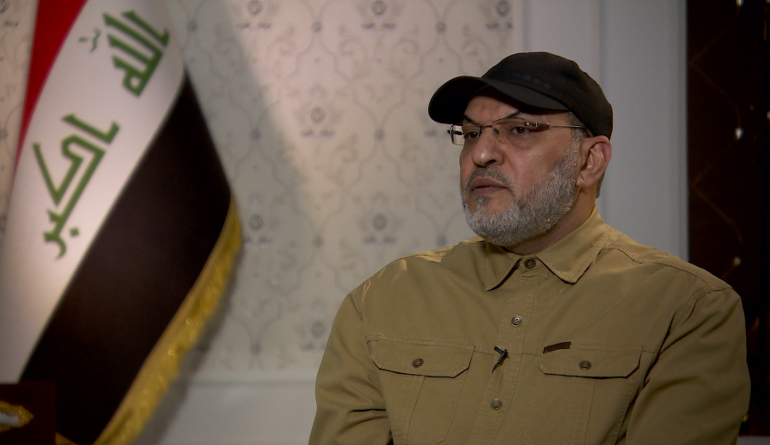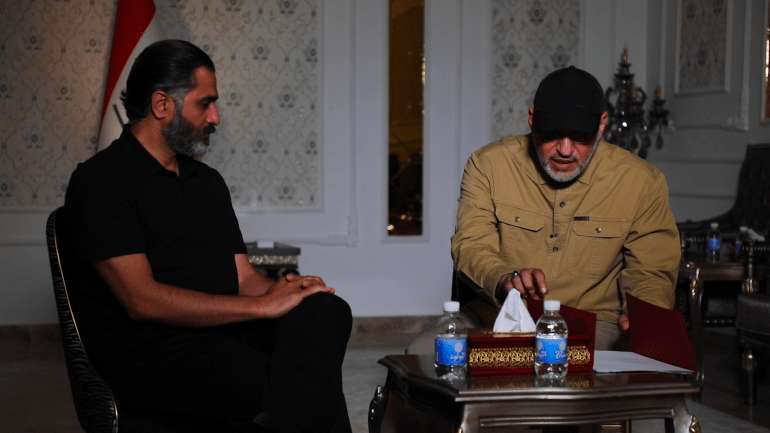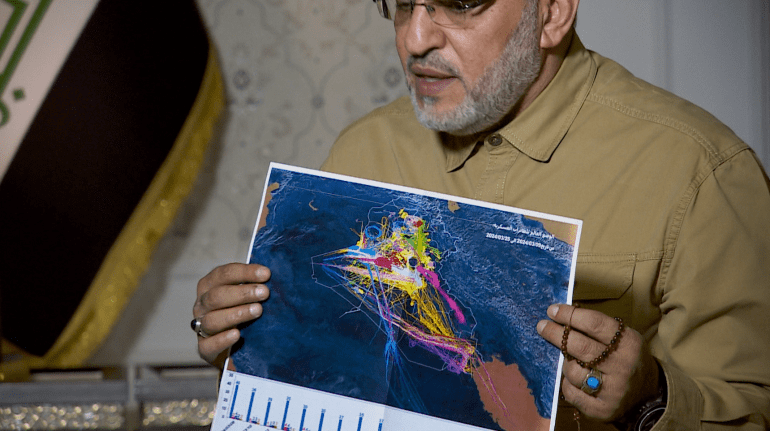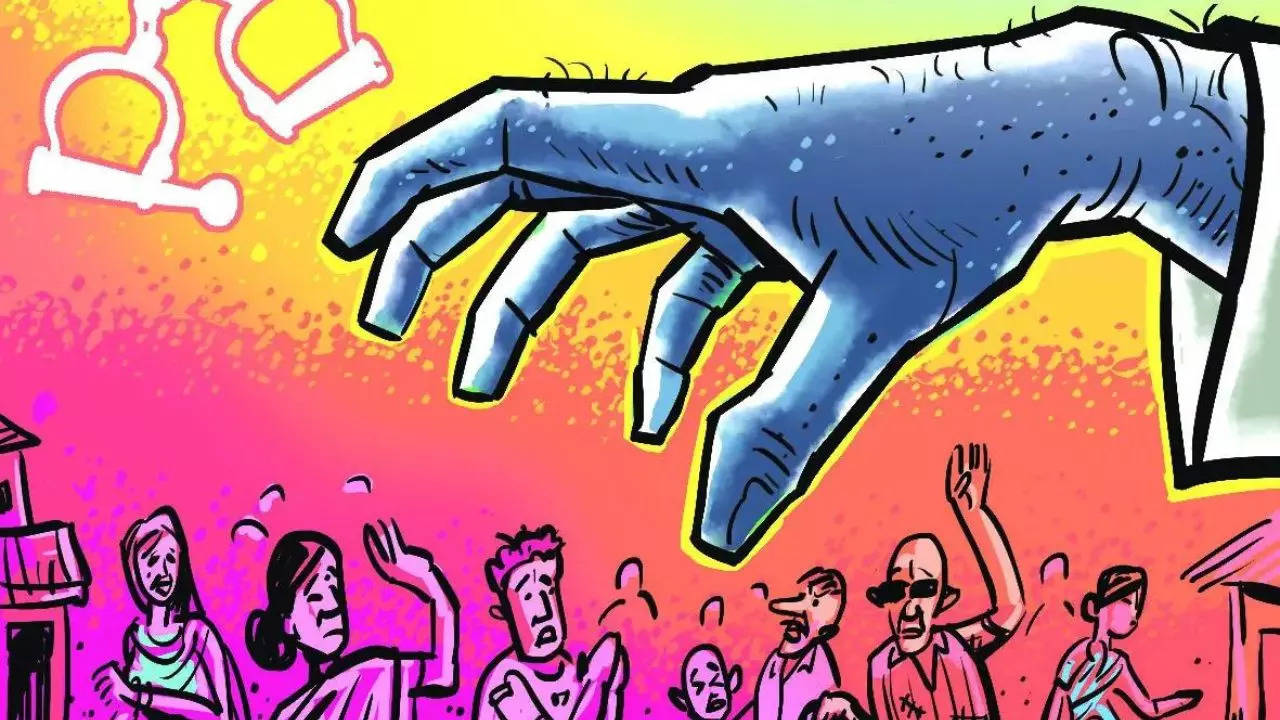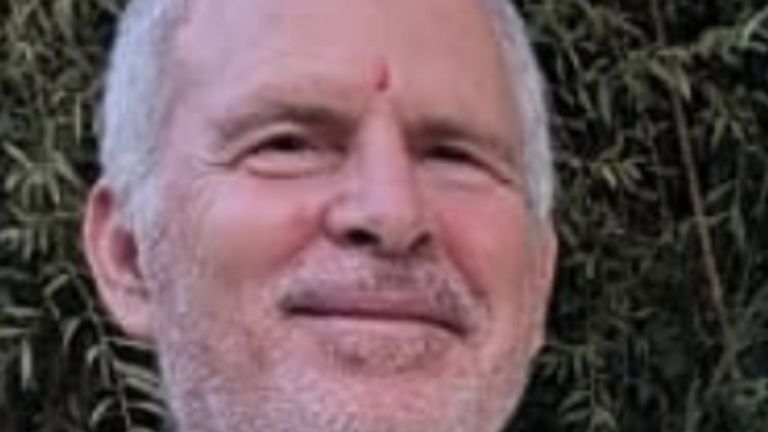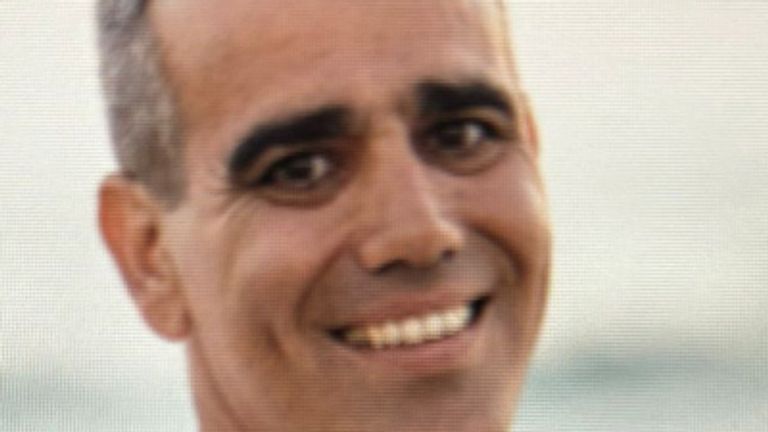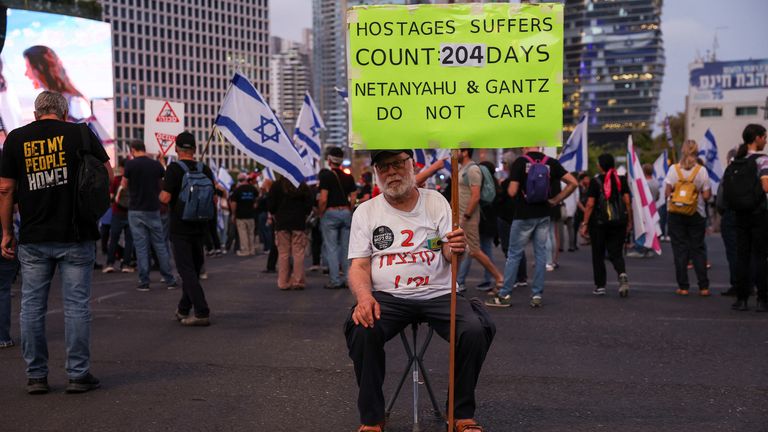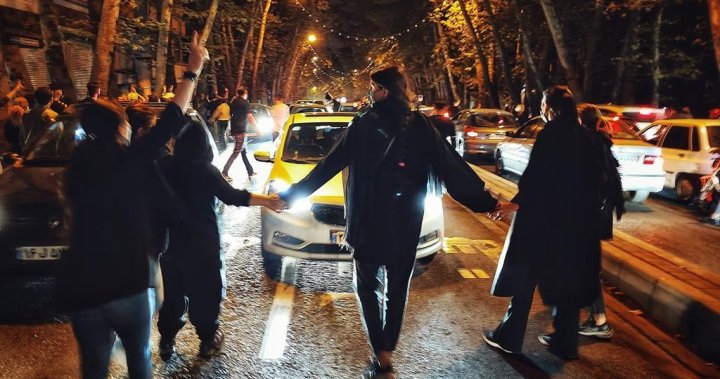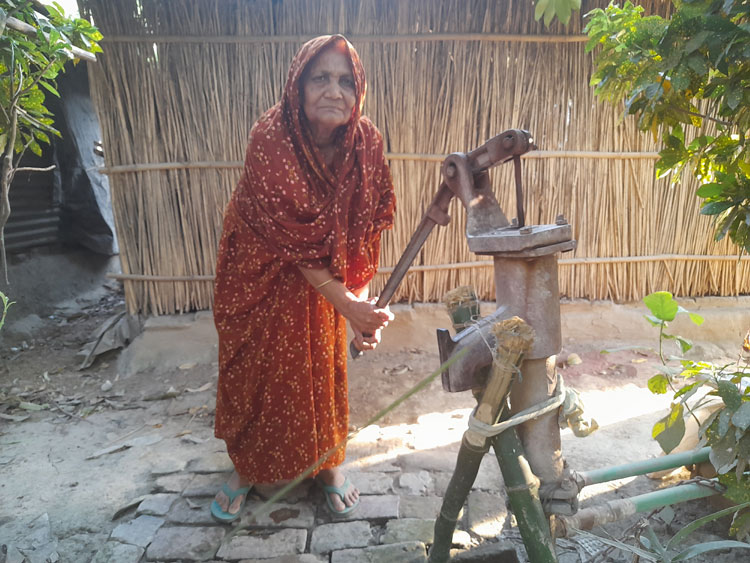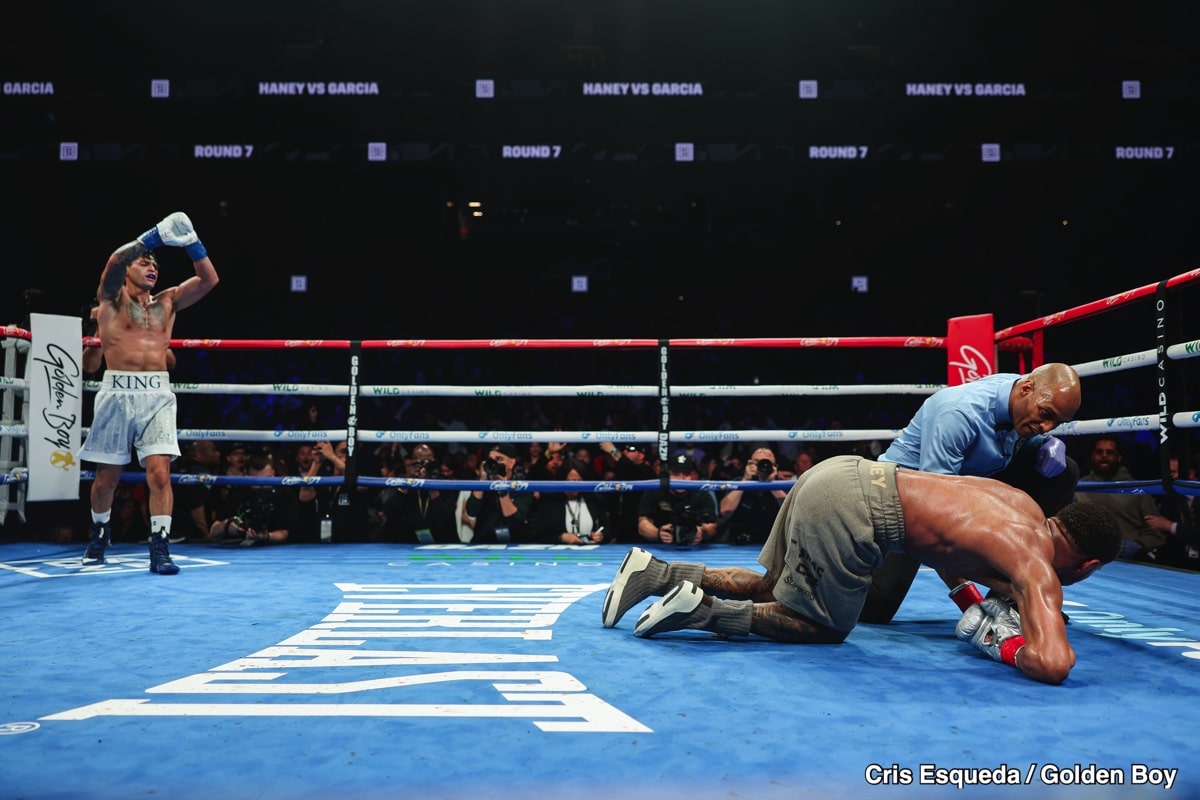Jason Moloney (right) on the attack against Aston Palicte. Photo by Top Rank
WBO bantamweight titleholder Jason Moloney (27-2, 19 KOs) wants to be big in Japan.
The 33-year-old Australian will make the second defense of his belt when he takes on local hero Yoshiki Takei (8-0, 8 KOs) at the Tokyo Dome in Tokyo, Japan on May 6.
The bout will take place on a massive world title quadruple-header headlined by undisputed junior featherweight champion Naoya Inoue (26-0, 23 KOs) defending his Ring Magazine championship as well as his IBF, WBA, WBC and WBO belts against Mexican southpaw Luis Nery (35-1, 27 KOs). The crowd is expected to be in the vicinity of 55,000 people.
With Japanese boxing thriving in every weight class from strawweight to featherweight, the Land of the Rising Sun is the place to be for boxers in the lighter weight classes.
And Moloney wants a piece of the action.
“It’s been an awesome preparation,” Moloney told The Ring. “I was just saying the other day that I think I’ve prepared better or harder for this fight than I have for my whole career. Obviously you try to train the same for every fight, but I felt that this one I really had to put the work in.
“This guy Takei has got a pretty unique style. We invested in bringing three guys over from Japan who have all been amazing sparring partners. I couldn’t have asked for any better work from all of those guys. They have all pushed me very hard and I’ve really put in the work and put in the rounds.”
The 27-year-old Takei of Yokohama may have a limited background in boxing, but he is no stranger to combat sports. As a professional kickboxer, he held the K-1 super bantamweight championship from 2017 until 2020. He was also the 2017 and 2019 K-1 super bantamweight grand prix winner.
Takei will be just the second lefthander Moloney had fought in the punch-for-pay ranks.
“I’ve only fought one southpaw as a pro,” said Moloney, who stopped Filipino lefty Cris Paulino on cuts in five rounds in March 2019.
“We’re got Bruno Tarimo in the gym who switches, he’s predominantly southpaw these days, and I still do work with southpaws from time to time, but obviously when you’re not fighting a southpaw, you don’t put too much emphasis on the work with them.
“So given this is only the second southpaw I’ve had to prepare for in 10 years as a pro, I really wanted to bank as many rounds as I could and make sure I was nice and comfortable with a lefty in front of me.
“I’ve done a lot of rounds and a lot of repetition just getting comfortable with the southpaw style and these guys I have been sparring have been great. They’ve really been watching Takei and they’re obviously familiar with him, being from Japan. They’ve tried to replicate his style as best they could and thrown some of his more signature punches and got me prepared really well for this. How I’m feeling now, I feel great. I feel really prepared and the game plan is really set and everything seems to be coming together nicely.”
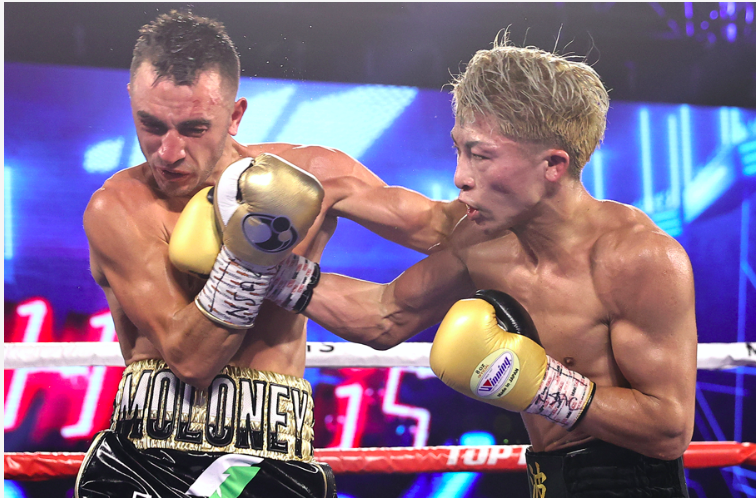
Moloney on the receiving end from pound-for-pound star Naoya Inoue. Photo by Mikey Williams
Victory for Moloney will set him up nicely for a unification bout against either WBA boss Takuma Inoue (19-1, 5 KOs), who defends his strap against veteran Sho Ishida (34-3, 17 KOs) on the same card, or WBC kingpin Junto Nakatani (27-0, 20 KOs), who defeated his twin brother Andrew by 12th round knockout at junior bantamweight last year.
A show-stopping performance against Takei will go a long way to making those fights a reality.
“Since the announcement for this fight I’ve had plenty of messages of support from Japanese fight fans,” said Moloney, who is ranked number two by The Ring at 118-pounds behind only Nakatani.
“They seem to appreciate what I bring to the ring, so I’m really looking forward to getting over there. Whether they are all cheering for me or cheering for Takei, it really doesn’t bother me too much. I’m planning to put on a really impressive performance and I know that the Japanese people will be impressed and hopefully I’ll gain a lot of new Japanese fans after this fight.
“Japan could be a bit of a second home for me in the next few years seeing as they are doing so well and putting on such awesome shows over there at the moment.”
Moloney has extra incentive to win the fight in impressive fashion after the tragic death of his friend Jaaden Abraham earlier this month.
Abraham, an amateur boxer Moloney trained to win the Queensland state title, died in an accident when he crashed his e-bike and suffered a catastrophic brain injury.
“It was just an absolutely devastating, tragic accident,” Moloney said. “Jaaden was a really good mate. I’d only been lucky enough to know Jaaden for about three years, but he was just one of those blokes you meet who you become pretty close to instantly.
“I was training him up, initially just to hold some pads for him, and he wanted to learn a bit about boxing, he was just getting into it himself. A mate introduced him to me and he said did you want to help him out and do a couple of one-on-one sessions and we just got along like a house on fire. He was keen to start fighting and I was just enjoying training him and like I said, we were getting along so well that I decided that I would be his coach. I had never really planned on training fighters and taking anyone on, but we had a great chemistry.
“We went to the Golden Gloves and he won the state titles and we had quite a few fights together and eventually I was preparing for one of my own fights and Andrew stepped in and became his coach as well.
“We both became really close with Jaaden, he was just a really good fella. He was an awesome guy to have in the gym and to be around, just an all-around top bloke. And unfortunately on Saturday night April 13 he was riding an e-bike back from one of his mate’s places at about 7:30pm. No one knows exactly what happened as he was by himself, but he must’ve fallen off. He wasn’t wearing a helmet, he hit his head pretty badly and caused a lot of brain trauma. Someone walking past found him on the side of the road unconscious and called the ambulance. He was airlifted to the hospital and put in ICU.

Jason Moloney
“His mum called me at 5:30 on Sunday morning and I didn’t answer my phone. I had my phone on ‘do not disturb’ as I was in training camp. I woke up to a voicemail message from his mum saying that he had had an accident and was in ICU. She asked if I wanted to come in and basically say goodbye because he wasn’t going to be around for much longer.
“He kept fighting for a few more days and they were hopeful that he might wake up, but it wasn’t to be. He never recovered from the accident.”
Moloney was asked to say a few words at Abraham’s funeral but he will already be in Japan for the Takei fight. He knows that the next best thing he can do is to honor his memory with a win.
“It sort of rocks your boat when something like that happens,” Moloney said. “I’ve experienced death in my family with grandparents and things like that, but never a shock death or one that’s just come completely out of nowhere.
“It’s pretty devastating news, obviously for his family and his friends who are pretty heartbroken. It certainly makes you realize we’re not here forever and we’ve got to make the most of our time on Earth because life’s precious and you never know when your time is up.
“As you said I’m definitely going to be taking a bit of extra spirit, a bit of extra motivation to the ring and I’ll be dedicating this fight to Jaaden and I’m sure he’ll be proud.
“He loved being there and watching me on the big stage and he loved his boxing, so I’ll be looking to do him proud on May the 6th and come home with the belt for him.”

